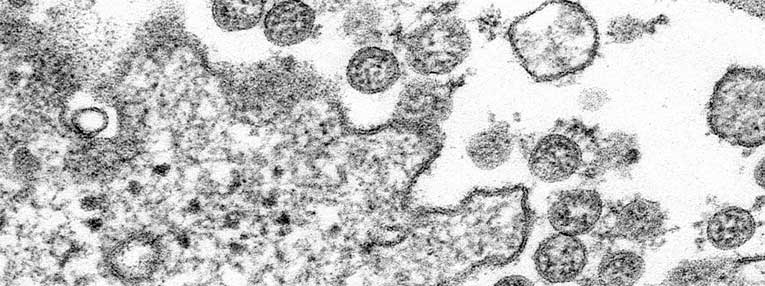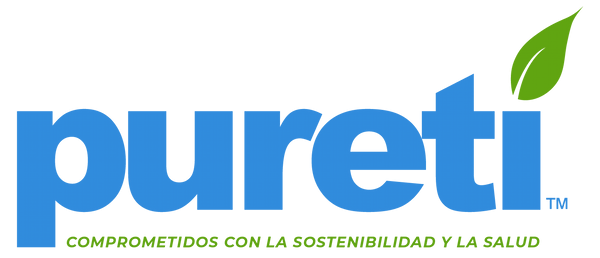
PURETi AND COVID-19
We have been responding to an incredible number of inquiries asking about using PURETi as an anti-viral to help deter the spread of COVID-19, and this page is designed to share with you some of the scientific research about photocatalytic surfaces and viruses.
Desde el momento de su descubrimiento, los beneficios del MOM fotocatalítico como antimicrobiano han sido objeto de importantes estudios científicos. La función básica de la nanopartícula de MOM es generar radicales hidroxilo y aniones superóxido a partir del agua y el oxígeno del aire. A su vez, estos dos agentes de limpieza han demostrado ser eficaces contra una amplia gama de contaminantes orgánicos (COV, hollín, moho, bacterias y virus), así como contra los contaminantes inorgánicos (NOx y SOx).
En PURETi, nos hemos centrado en el uso de la fotocatálisis como purificadora de aire y limpiadora de superficies. Sin embargo, a la luz de los acontecimientos actuales, creemos que es importante que la gente entienda qué opciones están disponibles para crear ambientes más limpios, más saludables y más seguros. La forma en que funciona la oxidación fotocatalítica (generando radicales hidroxilo y aniones súper óxido en la superficie) es ampliamente antimicrobiana, como se detalla a continuación.
The following three papers can be found at the website of the National Institutes of Health’s National Center for Biotechnical Information.
http://www.ncbi.nlm.nih.gov/pmc/articles/PMC4523504/
Comparison of Infectious Agents Susceptibility to Photocatalytic Effects of Nanosized Titanium and Zinc Oxides: A Practical Approach “Methods using photocatalytic properties of nanosized TiO2 and ZnO prove to be highly efficient in inactivation of infectious agents…A reduction of infectious agent transmission in the public space can be achieved thanks to the photocatalytic properties of self-disinfecting and self-cleaning surfaces. Their crucial compounds are oxides of some metals, such as TiO2 and ZnO, which, after they have been powdered to NPs, exhibit strong virucidal, bactericidal, and fungicidal properties.” J. Bogdan et al, Nanoscale Res Lett. 2015; 10: 309. Published online 2015 Aug 4. doi: 10.1186/s11671-015-1023-z
http://www.ncbi.nlm.nih.gov/pubmed/22580561
Photocatalytic inactivation of Influenza virus by Titanium Dioxide Thin Film. "Titanium dioxide (TiO(2)) under ultraviolet (UV) light produces a strong oxidative effect and may therefore be used as a photocatalytic disinfectant... Even with a low intensity of UV-A (0.01 mW cm(-2)), a viral reduction of approximately 4-log(10) was observed, equivalent to a reduction of 99.9999%, in a short irradiation time". R. Nakano et al. Photochem Photobiol Sci. 2012 Aug;11(8):1293-8. doi: 10.1039/c2pp05414k. Epub 2012 May 14.
https://www.ncbi.nlm.nih.gov/pubmed/21523480
La generación de especies reactivas de oxígeno (ROS) por fotocatálisis es capaz de matar una amplia gama de organismos, incluyendo endosporas de bacterias en el agua, en el aire y en superficies, incluyendo varios materiales. Esta tecnología tiene el potencial de proporcionar un arma poderosa en la lucha contra la transmisión de enfermedades infecciosas, particularmente en vista del desarrollo de catalizadores activados por la luz visible.
Viruses shown to be killed by photocatalytic disinfection:
Host Virus Reference: Bacteroides fragilis Not specified Armon et al. (1998), Birds Influenza (avian) A/H5N2 Guillard et al. (2008), E. coli Coliphage Guimarães and Barretto (2003), E. coli fr Gerrity et al. (2008), E. coli T4 Ditta et al. (2008), Sheel et al. (2008), E. coli λ vir Yu et al. (2008), E. coli λNM1149 Belhácová et al. (1999), E. coli φX174 Gerrity et al. (2008), E. coli MS2 Sjogren and Sierka (1994), Greist et al. (2002), Cho et al. (2004, 2005), Sato and Taya (2006a, b), Vohra et al. (2006), Gerrity et al. (2008), E. coli Qβ Lee et al. (1997), Otaki et al. (2000), Human Hepatitis B virus surface antigen HBsAg Zan et al. (2007), Human Influenza A/H1N1 Lin et al. (2006), Human Influenza A/H3N2 Kozlova et al. (2010), Human Norovirus Kato et al. (2005), Human Poliovirus type 1 (ATCC VFR-192) Watts et al. (1995), Human SARS coronavirus Han et al. (2004), Human Vaccinia Kozlova et al. (2010), Lactobacillus casei PL-1 Kakita et al. (1997, 20000, Kashige et al. (2001), Salmonella typhimurium PRD1 Gerrity et al. (2008).
During the avian flu crisis, we conducted one research study with the University of Minnesota to see the effectiveness of PURETi against feline calicivirus. Recently, the CDC has stated that this virus is a proxy for the COVID-19 virus for purposes of evaluating disinfectants (though no testing has been done specifically to COVID-19).
http://pureti.com/content/documents/Aug-2007-U.-of-Minn-DVL-report---PURETi-v-Feline-Virus.PDF
Note: The company name changed from TioxoClean to PURETi in 2008.
PURETi is committed to our mission to cost effectively improve human health and productivity and the environment by improving air quality. We are confident that our best-in-class products play an important role in the ecosystem of solutions when endeavoring to create healthy environments.
At a time when many businesses and families are looking to do everything possible to create healthier environments, we believe that treating surfaces that get exposure to UV-A light (outdoor surfaces, interior windows, light fixtures, curtains) is a simple and valuable contributor to an overall cleaning and disinfection program. PURETi can provide an additional layer of defense of long lasting effect (2 to 5 years indoors) in this battle.
Thank you for sharing our commitment, and please contact us if you have any questions at info@pureti.es
Thank you for taking the time to learn more about how PURETi can help create healthier and more productive environments disinfecting with light.
